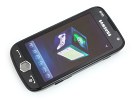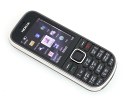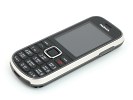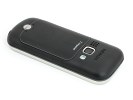Sony Ericsson XPERIA X10 preview: First look
Sony Ericsson XPERIA X10 preview: First look
Introduction
Sony Ericsson XPERIA X10 at a glance:
The first blog you can find
All useful information about the newest phones
(nokia,samsung,i-mate.....more and more)
Review by videos and pictures
Sony Ericsson XPERIA X10 preview: First look
Introduction
Sony Ericsson XPERIA X10 at a glance:
Acer neoTouch review: The dragon within
Introduction
Key features:
Main disadvantages:
Sony Ericsson XPERIA X10 preview: Getting closer
Introduction
Sony Ericsson XPERIA X10 at a glance:
Introduction
Key features
Main disadvantages
Introduction
Samsung's top tier of Omnia devices is populated by some seriously heavy-hitters - first the 720p video recording Omnia HD and now the Omnia II - with its best-in-the-business display, WM 6.5, zippy processor and preloaded software galore, it will certainly win the hearts and minds of Windows Mobile fans. It's no secret that the Samsung Omnia II has the HTC Touch Diamond2 in its sights. The Omnia II has several advantages, not the least of which is the amazing 3.7" AMOLED WVGA display. For the acronym-allergic - WVGA means 480 x 800 pixels resolution, which several years ago might have been considered acceptable for a computer monitor. That resolution is not so uncommon today, the exciting part here is "AMOLED" - active matrix organic LED. Or in plain English - brilliant picture quality. It doesn't end there - the 800MHz CPU is one of the speediest around and the available capacities of up to 16GB built-in memory and up to 32GB external storage via microSD card offer more than enough memory expansion. There's Wi-Fi and GPS, the autofocus camera shoots 5MP stills and D1 video at 30fps and has dual-LED flash, there's DivX playback out of the box and HSDPA and HSUPA push the phone to great wireless speeds. We can spend a lot of time talking about the features of the Omnia II but here they are in a bullet list, which should be easier to read. The Omnia II sample used for this review runs Windows Mobile 6.5, while the units that are currently available on the market run Windows Mobile 6.1. Those however will be eligible for a free upgrade to ver. 6.5 as soon as Micorsoft release the final build of the new OS (rumored late September or early October). All Omnia II units that will ship after that will run the Windows Mobile 6.5 out of the box. UPDATE 29 Aug: There seems to be a lot of commotion in various forums, our comments section included, about the actual CPU speed of the Omnia II - 667MHz or 800MHz. Samsung official specs seem to deliver some contradictory information and you should rest assured we will be contacting Samsung directly to clear up the issue. All that being said, it’s just numbers we’re talking here. If you think that calling it 667MHz makes Omnia II a worse performer, you’re wrong. The clock rate of a processor is only useful for providing comparisons between computer chips in the same processor family and generation and is hardly useful for direct comparison between competing mobile platforms. But we digress. Our point here is that no matter what the actual MHz number is, at no point did we judge the Samsung Omnia II by its pure clock rate. Instead we quite more value the real-life impressions of our experienced reviewers and we’ve hardly drawn any conclusions based on the pure processor spec sheet. And neither should you – no matter if it is 667MHz or 800MHz we’re talking about in this particular case, the Omnia II remains a leading performer among smartphones this year. Now that we've taken that off our chest, jump to the next page while you catch your breath after reading that long specs list. We continue with the Omnia II doing a 360 pirouette and then look at the hardware side of this multimedia Goliath.Samsung I8000 Omnia II review: A surprising experience


Samsung I8000 Omnia II official photosKey features:
Main disadvantages:



Samsung I8000 Omnia II in our office
The Nokia 3720 classic is putting on its boots, pulling on its anorak, slinging its rucksack over its shoulder and striding out into the unfriendliest of environments: water, dust, tough ground…you name it, this device promises to shrug it off and keep on going. After countless Nseries, Eseries, XpressMusic and classic releases and facelifts, Nokia look keen to revisit an almost forgotten niche of users - those who need a tough phone. Well, the Finns have finally put that right and they seem to have a promising candidate on their hands for those who care less about features and even less about the weather. So, if you're after a handset that can survive the elements, get ready to check out the rugged Nokia 3720. As a part of the Nokia classic series, the 3720 has a stylish oval design, nice handling, S40 user interface, decent display, FM radio and a 2 megapixel camera. But that's not all. As a ruggedized device, the Nokia 3720 classic has been designed to resist water, dust and to survive some pretty extreme situations. Here is a list of what the Nokia 3720 classic can do for you and another one of the things that just didn't fit in that sort of tough body. Well here we are, holding the rugged Nokia 3720 classic in our hands and just itching to submerge it in water or run over it with a car. It's not too often that we get the chance to play with devices from this specialized sector of the mobile market, so we hope you'll share our enthusiasm as we put it through a battery of tests.But we'll come to that eventually. For now, let's not waste any more time and get straight to it with the design and ergonomics after the jump.Nokia 3720 classic: Handle without care
Introduction:






Nokia 3720 classic official photosKey features:
Main disadvantages:




Nokia 3720 classic live photos
© Blogger template The Professional Template by Ourblogtemplates.com 2008
Back to TOP